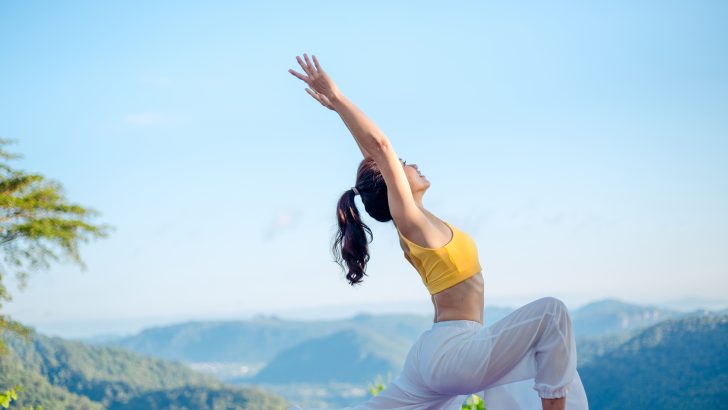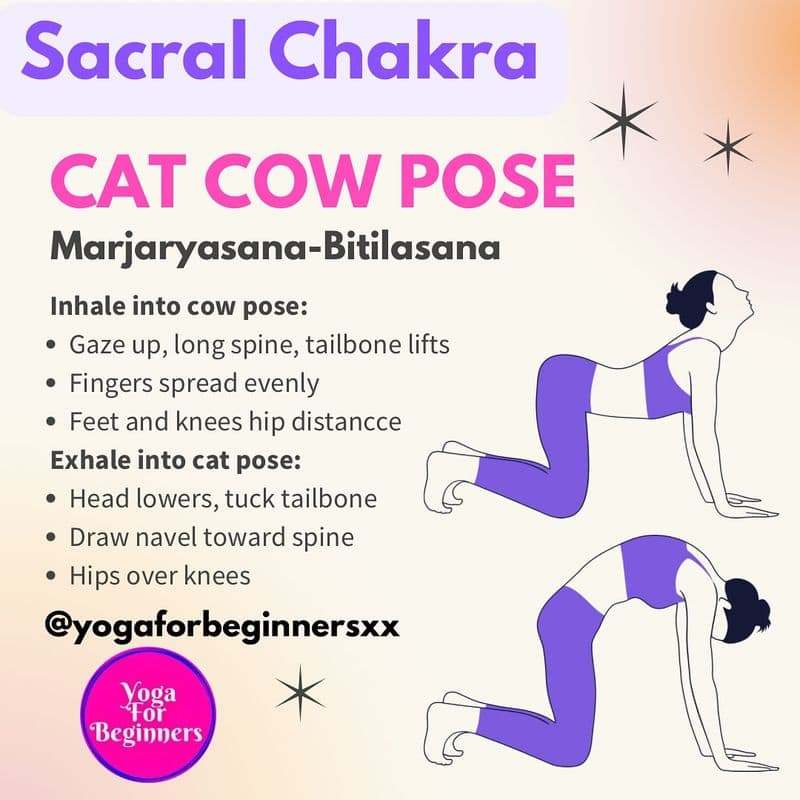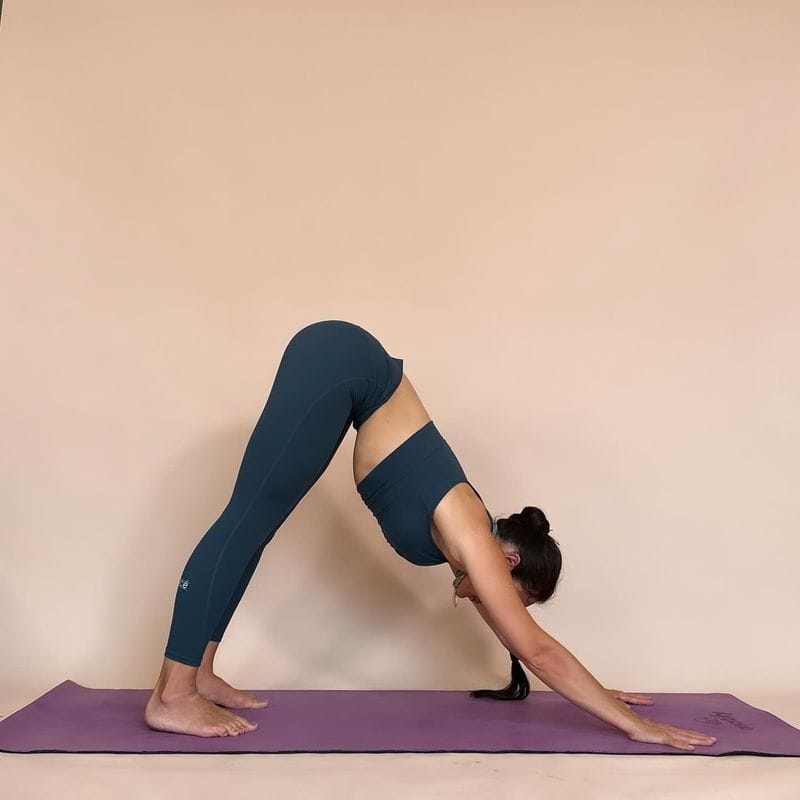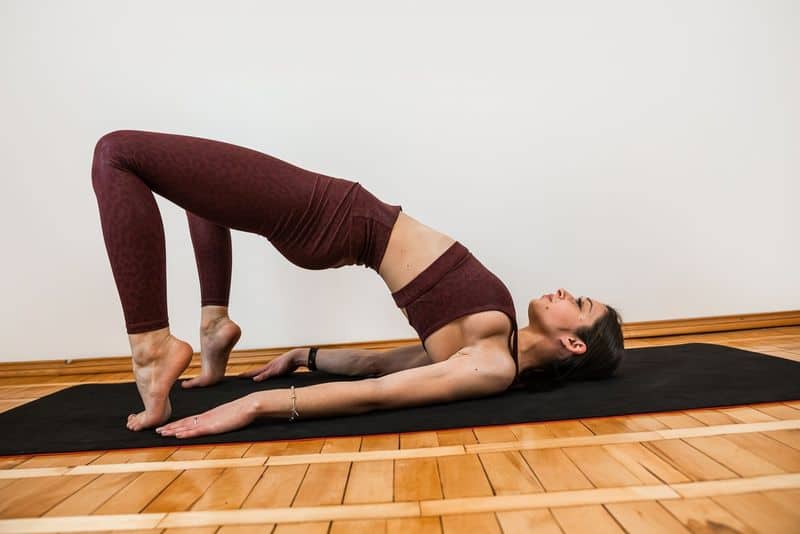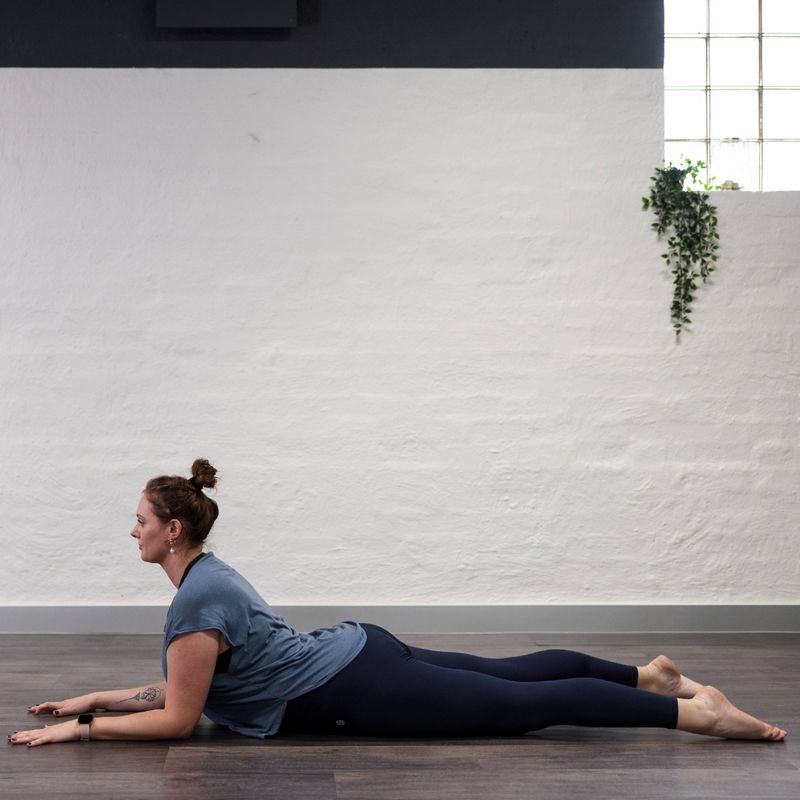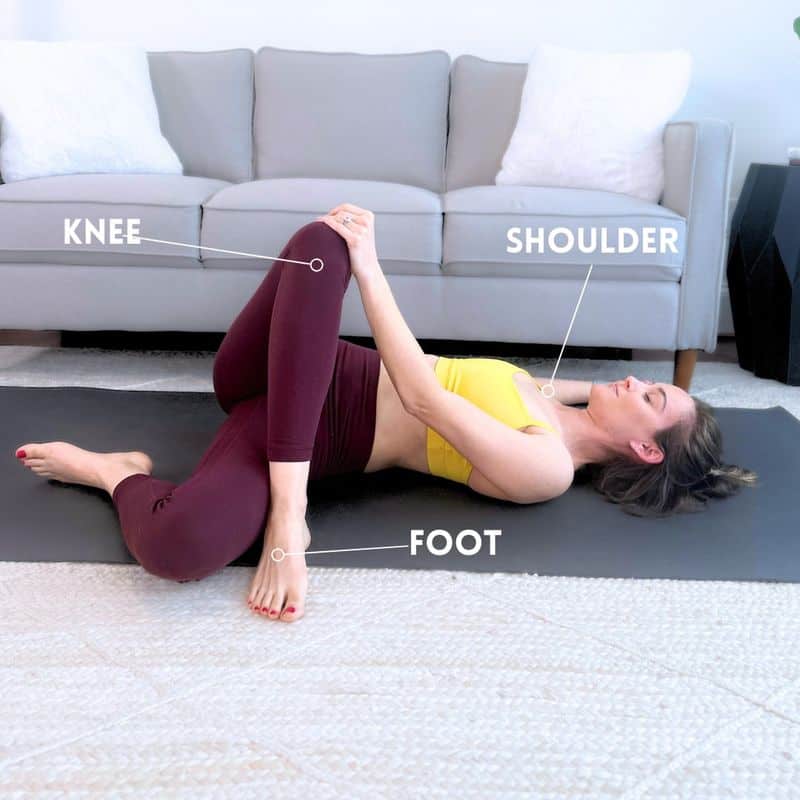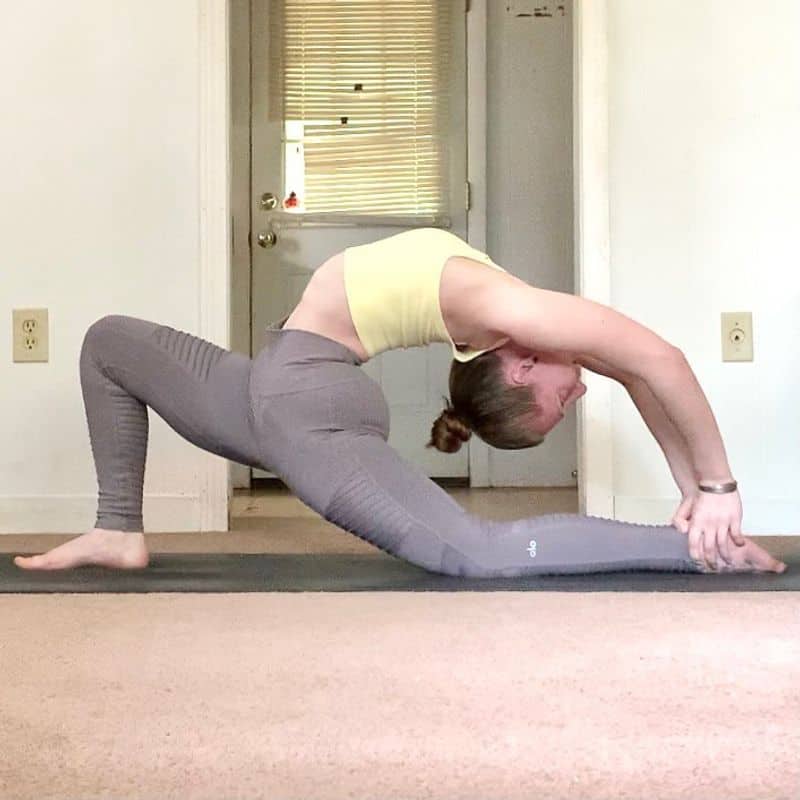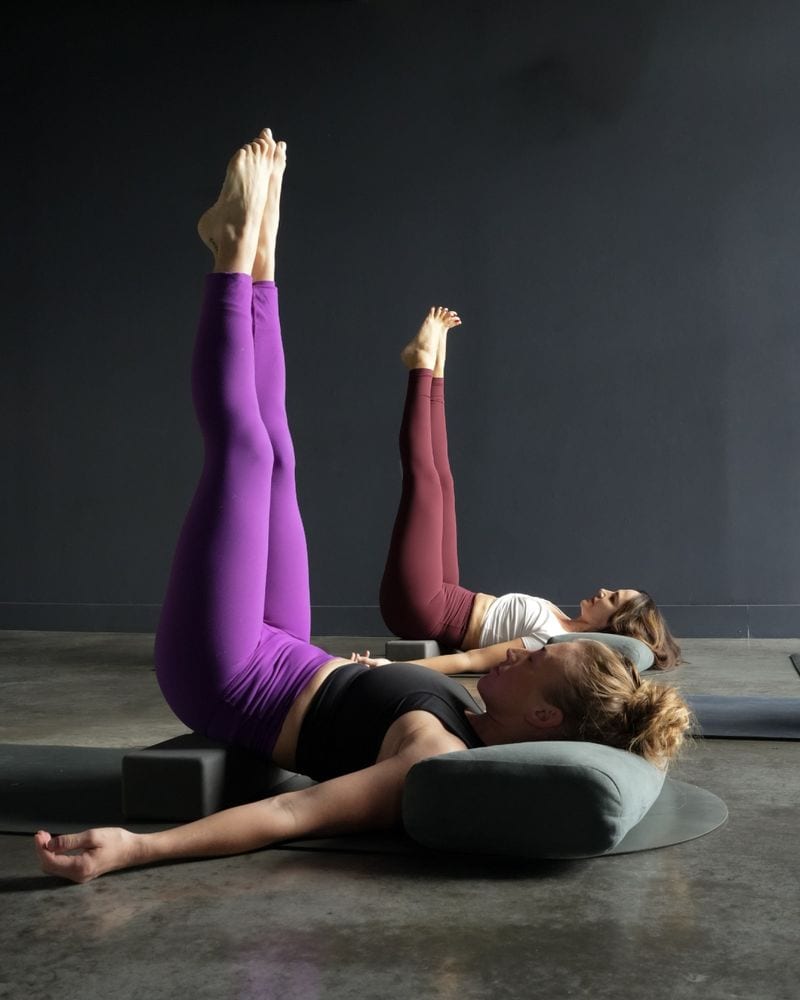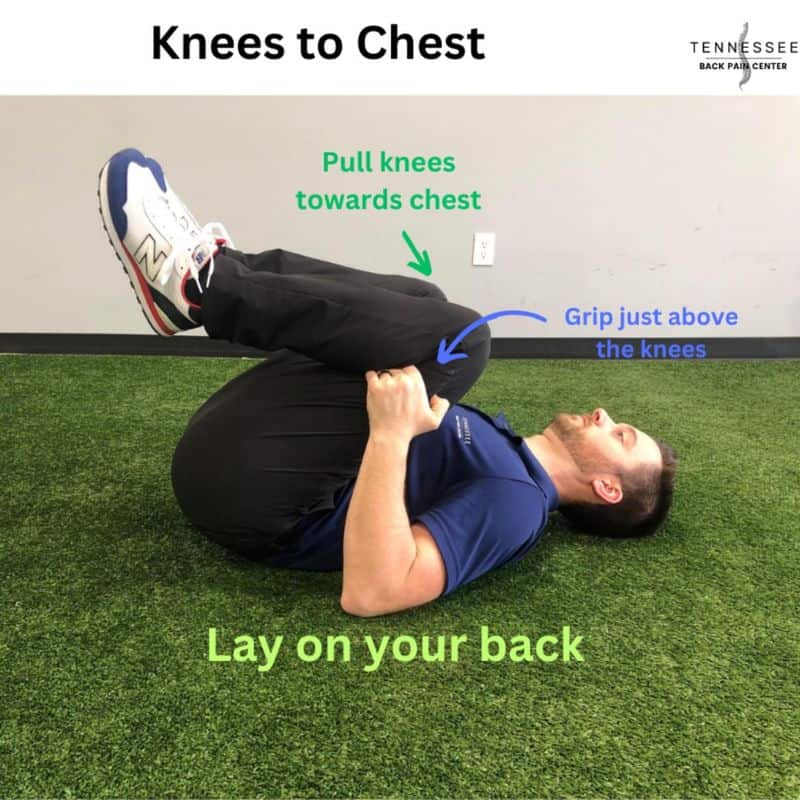Back pain can make everyday activities feel impossible. Yoga offers gentle yet effective ways to strengthen your spine and ease discomfort without expensive equipment or complicated routines.
These simple poses can help reduce tension, improve flexibility, and provide relief when your back is giving you trouble.
1. Child’s Pose (Balasana)
Resting on your knees with your forehead touching the floor creates instant relief for an aching back. Your arms can stretch forward or rest alongside your body while your hips sink toward your heels.
This restful position gently opens the lower back and hips while allowing your spine to decompress naturally. The beauty of Child’s Pose lies in its simplicity – it requires no strength yet delivers powerful stretching benefits.
Perfect for beginners and advanced practitioners alike, this pose serves as both a resting position and therapeutic stretch. Try holding it for 1-3 minutes while taking slow, deep breaths to maximize its soothing effects.
2. Cat-Cow Stretch (Marjaryasana-Bitilasana)
Moving rhythmically between arching and rounding your spine creates a massage-like effect for tense back muscles. Starting on hands and knees, you’ll alternate between lifting your chest while dropping your belly (Cow) and rounding your back while tucking your chin (Cat).
The flowing movement lubricates spinal joints and improves circulation to the discs between vertebrae. Many physical therapists recommend this dynamic stretch because it safely mobilizes the entire spine without strain.
Synchronizing your breath with movement – inhaling during Cow and exhaling during Cat – enhances the pose’s effectiveness. Just 10-15 repetitions can significantly reduce stiffness and discomfort.
3. Downward-Facing Dog (Adho Mukha Svanasana)
Forming an inverted V-shape with your body creates a powerful stretch for your entire posterior chain. Your hands press firmly into the mat while your hips lift toward the ceiling, creating length through your spine, hamstrings, and calves.
The beauty of this pose lies in how it decompresses your spine while simultaneously strengthening the supporting muscles. Blood flow increases to your upper body as gravity helps release tension in your lower back.
Beginners can modify by bending their knees slightly to reduce hamstring strain. Hold for 30-60 seconds, focusing on sending your sitting bones upward rather than forcing your heels down.
4. Bridge Pose (Setu Bandhasana)
Lying on your back with knees bent, lifting your hips skyward creates a gentle backbend that strengthens crucial muscles. Your shoulders and feet anchor you while your glutes activate to support your lower spine in this therapeutic position.
Regular practice helps counteract the effects of prolonged sitting by opening the chest and front of hips. The pose specifically targets the posterior chain – including glutes and hamstrings – which often weaken from modern sedentary lifestyles.
For extra support, try placing a yoga block under your sacrum (the triangular bone at the base of your spine). This modification allows for longer holds and deeper relaxation while still receiving the pose’s benefits.
5. Sphinx Pose (Salamba Bhujangasana)
Resting on your forearms while gently lifting your chest creates a mild backbend that strengthens your spine. Your pelvis remains grounded as your upper body rises, creating a therapeutic curve that counteracts hunched postures.
The gentle pressure applied to your lower back actually helps stimulate blood flow to this often-troubled area. Unlike more intense backbends, Sphinx provides accessibility for most practitioners while still delivering significant benefits.
Try holding this pose for 1-3 minutes while focusing on relaxing your glutes and lengthening through the crown of your head. The subtle activation of your back muscles builds endurance in the exact areas needed to support proper posture throughout your day.
6. Seated Forward Fold (Paschimottanasana)
Stretching forward over extended legs creates a deep release for the entire back body. With legs together and spine reaching forward, this pose gently lengthens tight hamstrings and spinal muscles that contribute to back discomfort.
The key lies not in touching your toes but in maintaining length through your spine. Bending from the hips rather than rounding the lower back protects vulnerable areas while maximizing therapeutic benefits.
Using a strap around your feet can help those with tighter muscles achieve proper alignment. Allow gravity to deepen the stretch naturally while focusing on relaxed breathing – each exhale creating space for a subtle deepening without forcing.
7. Supine Twist (Supta Matsyendrasana)
Lying on your back while gently rotating your knees to one side creates a soothing spinal twist. Your shoulders remain grounded as your lower body turns, delivering a gentle wringing effect to your vertebrae and surrounding muscles.
The twist action helps hydrate spinal discs and release tension in the paraspinal muscles – those rope-like bands that run alongside your spine. Many find immediate relief as this pose targets areas where stress accumulates throughout the day.
For maximum comfort, try hugging a pillow between your knees during the twist. Hold each side for 30-60 seconds, allowing your breath to soften any resistance in your body as gravity does the work of deepening the stretch.
8. Low Lunge with Backbend (Anjaneyasana variation)
Stepping one foot forward between your hands while lifting your chest creates a powerful stretch for tight hip flexors. These muscles, when contracted, often pull on your lower back and contribute to pain.
The gentle backbend component opens your chest and counteracts the forward hunching many experience from desk work or phone use. Your front knee stays aligned over your ankle while your back leg extends long, creating stability and length simultaneously.
For deeper release, try reaching your arms overhead while maintaining a slight lift through your lower belly. This active engagement protects your lower back while allowing the therapeutic opening to target exactly where you need it most.
9. Legs-Up-The-Wall Pose (Viparita Karani)
Resting with your legs extended up a wall creates a gentle inversion that takes pressure off your lower back. Your body forms an L-shape as you lie on your back with your sitting bones close to the wall and legs pointing straight up.
Gravity works differently in this position, allowing your spine to decompress naturally as blood flow patterns shift. The pose requires zero strength yet delivers profound relaxation to chronically tense back muscles.
For maximum comfort, place a folded blanket under your hips and slightly bend your knees if hamstrings feel tight. Many practitioners report this pose feels especially therapeutic after long periods of standing or sitting that compress the spine.
10. Gentle Spinal Rocking (Pawanmuktasana variation)
Hugging your knees to your chest while gently rocking side to side creates a massage-like effect for your lower back. This simple movement helps release tension and improve mobility in the sacrum and lumbar regions where pain commonly occurs.
The rocking motion stimulates circulation between your vertebrae and surrounding tissues. Many find this exercise particularly soothing first thing in the morning or after long periods of sitting.
Try adding small circles with your knees for additional relief. The beauty of this pose lies in its adaptability – you control the pressure and range of motion based on what feels good for your unique body, making it truly accessible for various pain levels.

